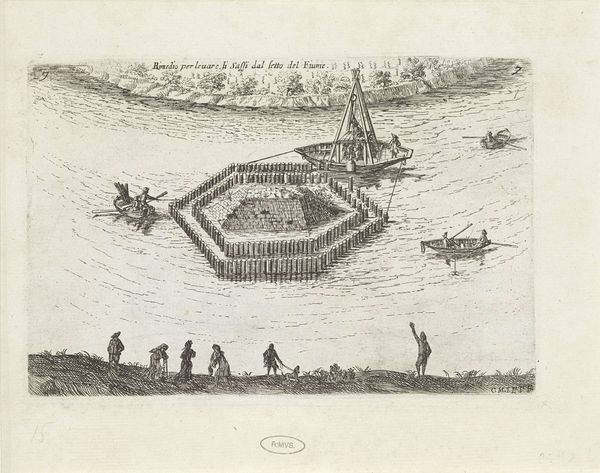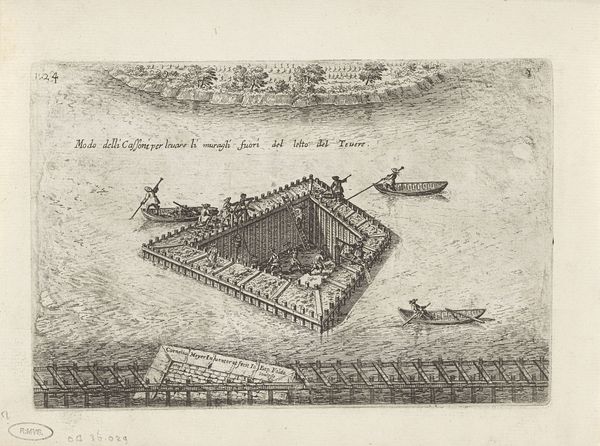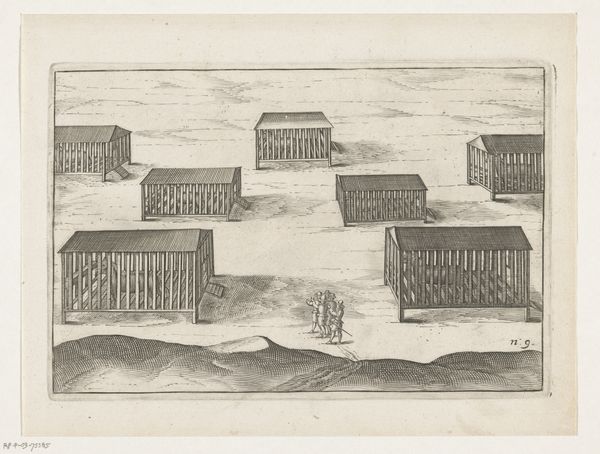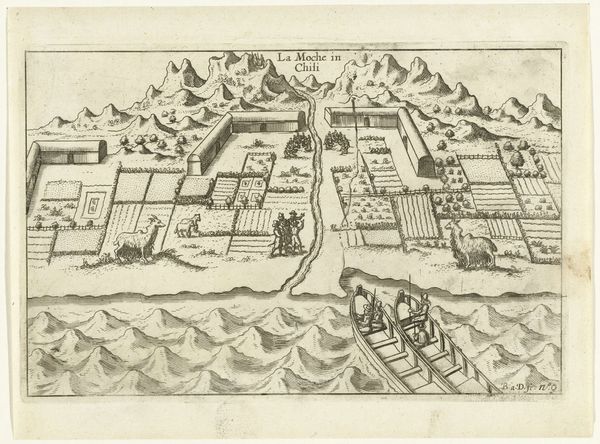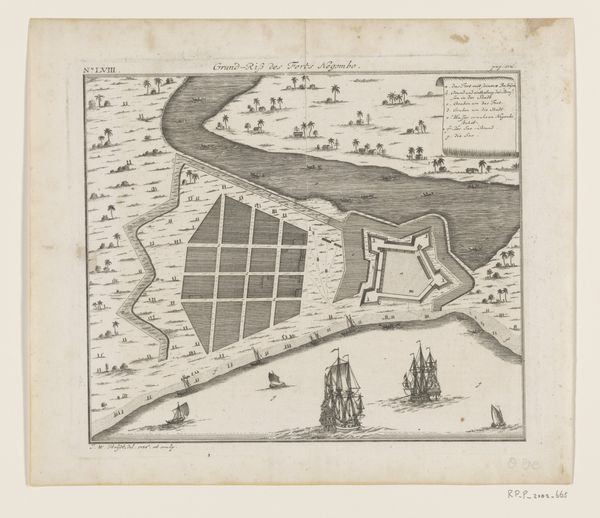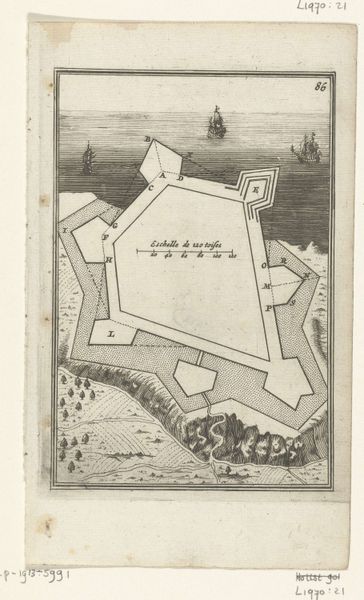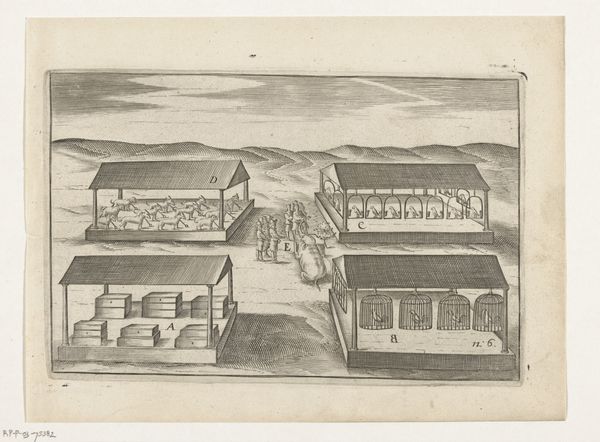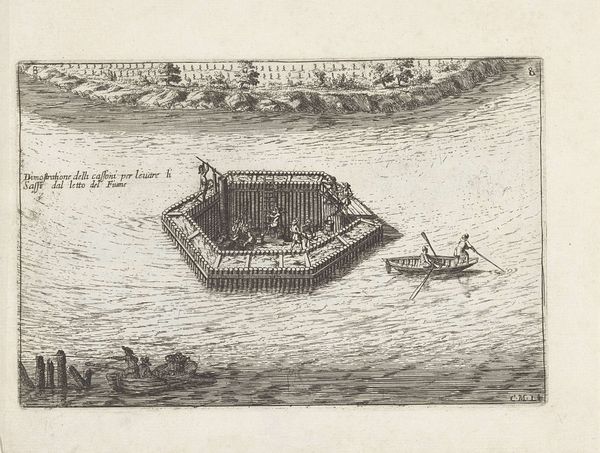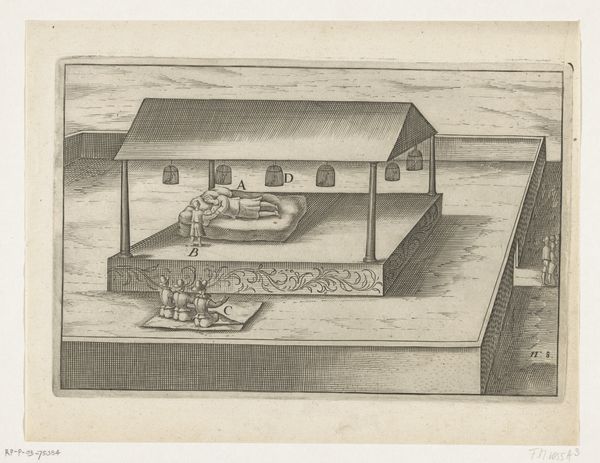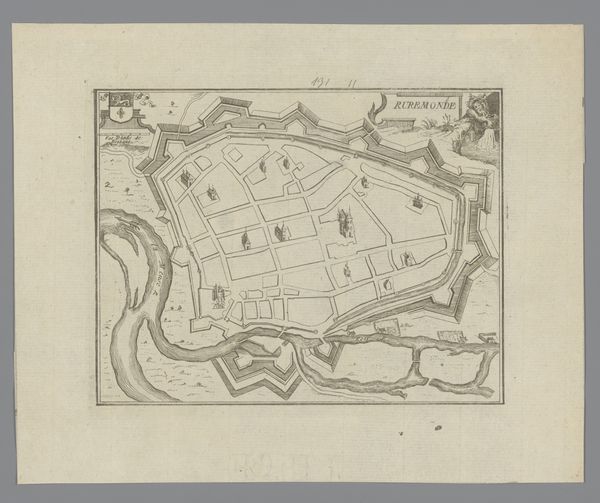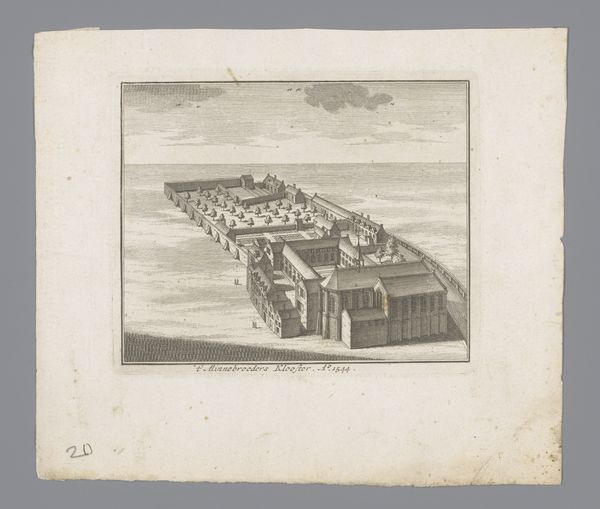
print, engraving
# print
#
old engraving style
#
landscape
#
figuration
#
islamic-art
#
engraving
Dimensions: height 145 mm, width 215 mm
Copyright: Rijks Museum: Open Domain
Editor: So this is “De harem van de koning van Tuban, 1599,” or "The Harem of the King of Tuban" from the early 1600s, it’s an anonymous engraving on view here at the Rijksmuseum. It's interesting how the printmaking technique allows for such meticulous detail. How would you interpret this from an art history perspective? Curator: As a materialist, I find it fascinating to consider the historical context of this engraving's production. What materials were used, and how did they influence the final product? The very act of creating this print was a process of disseminating information, an act of labor tied to economic and social systems. The line work gives the scene an architectural, almost cartographical quality. How was this print received, reproduced, and consumed by a European audience interested in, and likely exotifying, the East? Editor: I see what you mean, so not only the "what" is depicted but also the "how" becomes a key aspect. This process of engraving seems quite labor-intensive, which shifts how we might view this image of a harem. It almost critiques labor relations. Curator: Precisely! We must ask: Who was the engraver? What were their working conditions? This artwork serves as a record of cultural exchange and appropriation. It also illuminates the labor that went into its production, blurring the lines between high art and craft, raising essential questions about the value we place on artistic creation versus material labor. The stark geometric shapes highlight a European imposition of order onto a foreign subject. Do you agree that there is some kind of orientalist critique implied by that European imposed order? Editor: Definitely. Viewing the print through the lens of materiality and production helps reveal underlying power dynamics. This piece raises fascinating questions. Thanks so much for opening my eyes to that perspective. Curator: It’s my pleasure. Considering art as a product of social and economic conditions truly enhances our understanding. I'll definitely look at more artworks with a new perspective now.
Comments
No comments
Be the first to comment and join the conversation on the ultimate creative platform.

